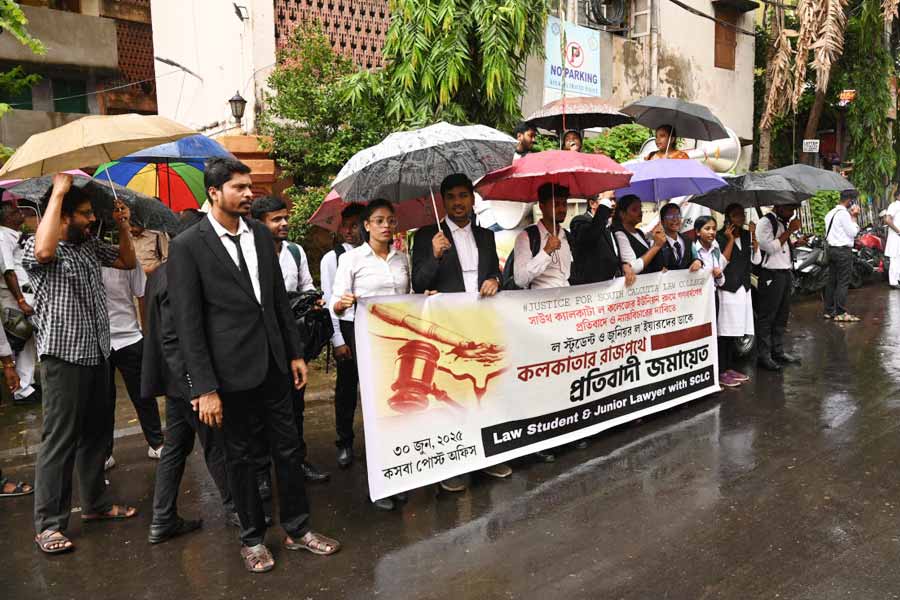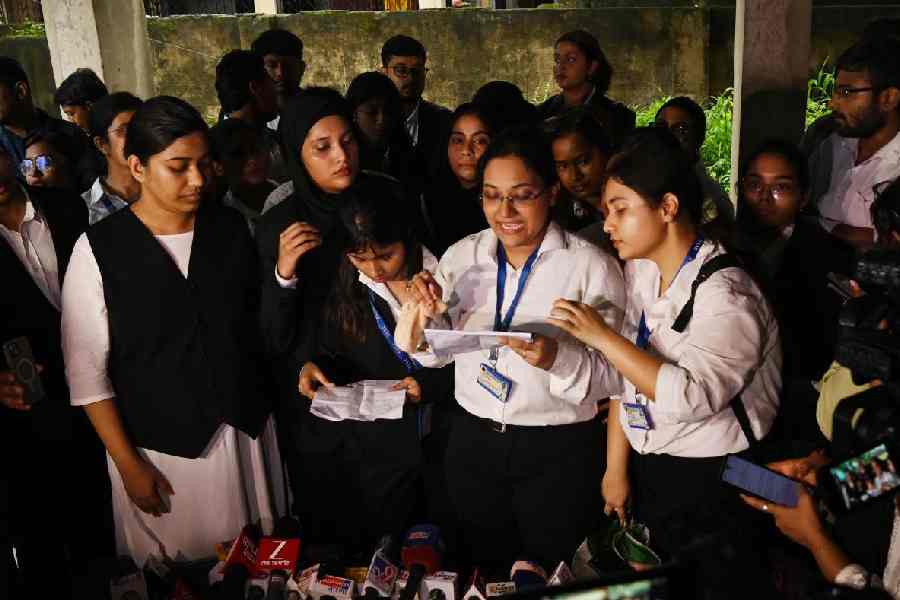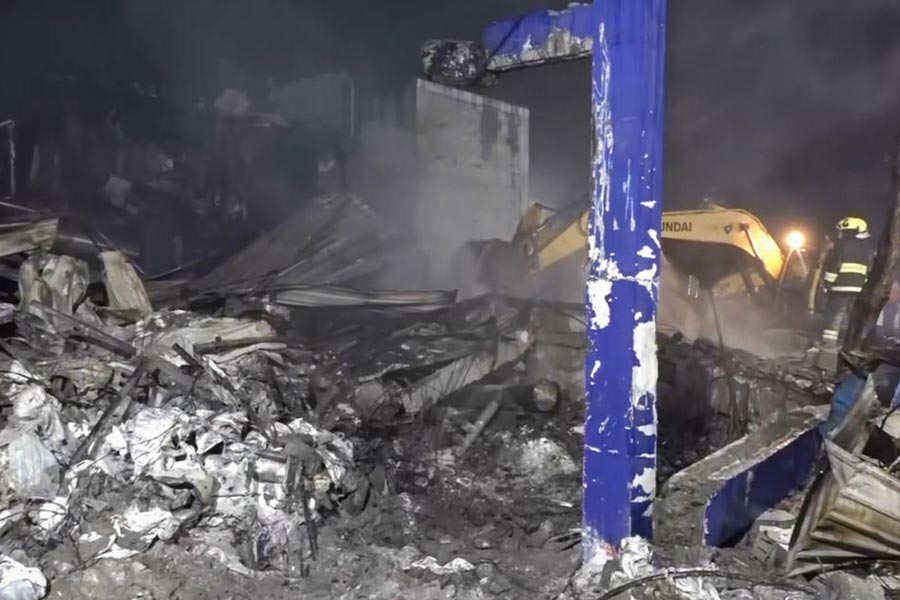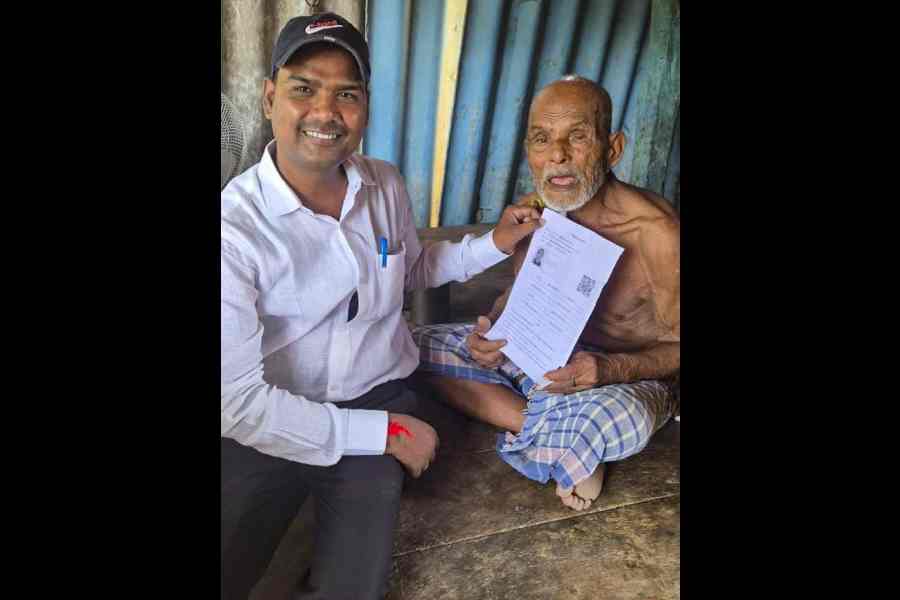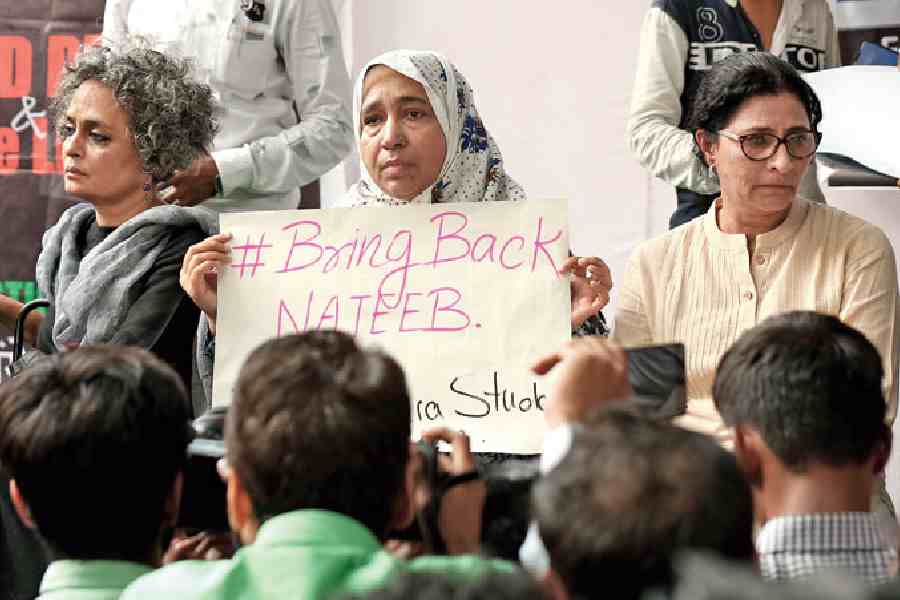|
|
No assessment of next week’s summit meeting in Dhaka is complete without considering the emotional bonding that Kamal Hossain, the only surviving member of Sheikh Mujibur Rahman’s cabinet, invoked while delivering the Sarat Chandra Bose Memorial lecture. Nor can any analysis afford to ignore the contrary pulls that Sarat Bose’s granddaughter, the Oxford historian, Sarmila Bose, highlights in her controversial new book, Dead Reckoning: Memories of the 1971 Bangladesh War.
The ambitious agenda that Manmohan Singh and Sheikh Hasina Wajed have set for themselves deserves to fructify for the economic vitality and political stability of the subcontinent as a whole. But if it does, it will be because instead of being bogged down, as bureaucrats tend to be, in specifics like textile quotas and equity for power plants, the two leaders are able to take a long-range view of the underlying causes of disharmony. Otherwise, one physical obstacle that is removed will merely be replaced by another. Understanding demands interpreting the gaps in communication, reading between the lines, deciphering the small print and realizing why today’s euphoria may not be for ever.
An anonymous reader’s comment on the internet report of Hossain’s eulogy on how much Bangladesh and West Bengal have in common reads, “Both Bengals are united by the many millions of illegal Bangladeshis who have infiltrated India, and made a Bangladesh out of major parts of West Bengal.” That acerbic remark is of a piece with the abusive letters I sometimes get in response to an article advocating a conciliatory approach. Some internet comments (presumably from the other side of the fence) on the Wajed government’s decision to name a Dhaka road after Indira Gandhi are equally crude. Making allowance for the social and intellectual level of those who need to let off steam through vulgarity, it’s impossible to say whether the writers are anti-Indian because they are anti-Awami League, or the other way round. When he was president of Bangladesh, Hussain Muhammad Ershad gloated that even “the India lobby” — Sheikh Mujib and his daughter — had failed to persuade India to agree to the tripartite (including Nepal) riparian talks that Rajiv Gandhi had promised him.
No wonder Inder Kumar Gujral advised Wajed during her previous incarnation in office not to sell Bangladeshi gas direct to India but to route it through an American corporation. “Let them take their 10 per cent. Otherwise, we’ll both be subject to too much political pressure.” Khaleda Zia, the former prime minister, is already accusing Wajed of selling out to India.
Bangladesh’s relations with India — not West Bengal — are now on the anvil. But West Bengal is like Banquo’s ghost at any Delhi-Dhaka dialogue. Manmohan Singh must be commended, therefore, on taking Mamata Banerjee with him. The other four chief ministers he has also invited may make equally substantive contributions regarding border trade, communications, migration, insurgents and other pertinent issues. But only a chief minister of West Bengal with a historical background, some appreciation of cultural evolution and societal trends, a vision of the eastern region’s future and able to pick up nuances of language can also address the heart of the matter. Wajed was so quick to congratulate Banerjee on her victory only because she, too, appreciates the importance of the link.
Muchkund Dubey, one of the most percipient high commissioners India has ever sent to Dhaka, told the Rotary Club there that “to a very great extent, our problems are psychological. This psychology is derived from our common past”. Both the complex and the commonalty hark back to times when Sarat Bose and others thought Bengal was indivisible. Dubey also attributed differences “to what one can call small-neighbour-big-neighbour syndrome”. He was too politically correct to mention the third factor — religion — which may not be important in itself but acts as a reactive agent that can make all discourse explosive. Sarat Bose’s desperate last-ditch efforts to save Bengal’s unity may not have failed (despite stiff British and Congress high command objections) had it not been for the strength of what is nowadays labelled identity politics.
This all-important difference between the two brands of Bengalis still fuels memories of what the National Awami Party’s Muzaffar Ahmed called Bengal’s “two-hookah culture”. Twenty-four years of Pakistani rule, with Zulfiqar Ali Bhutto referring to East Bengal as “Muslim Bangla”, did nothing to erase that memory. Hossain’s several references in his Netaji Research Bureau address to the emergence of a middle class also obliquely drew attention to the old hierarchy which might have reinforced another aspect of what Bose calls East Bengal’s “victim culture”.
While banishing memories that encourage tension, it’s necessary, as much in India as in Bangladesh, to examine Hindu and Muslim perceptions of each other. Overuse and misuse have reduced the word, communal, to a synonym for violence. It doesn’t any longer convey the subtleties of community feeling or permit understanding of the extent to which religion can shape thinking and influence bilateral relations, even if subconsciously. The distinction between “Muslim Bengalis” and Hindus that emerges in Bose’s book is as much a social reality as Kamal Hossain’s effusion about cross-border affinity. Given Bangladesh’s chequered past and present diversity, the two need not be irreconcilable.
It’s a relic of the shared past that Dhaka already has an Indira Road in Tezgaon but, contrary to popular belief, it’s not named after Mrs Gandhi. It got its name from an obscure but beautiful girl called Indira whose father, Dwijadas Dutta, a Cornell graduate, headed the agricultural farm, hence Farm Gates, a name that also still survives. Indira suddenly contracted typhoid and died a few weeks before her arranged marriage to a promising young Chittagonian in the Indian Civil Service. Her inconsolable parents named their house Indiralay (or Indiranilay), had ornamental I’s woven in its wrought iron grills and railings, and built a white marble temple in the garden with a lifesize statue of their daughter wearing all the gold jewellery that was made for her wedding. When I visited Indiralay for the first time in the late 1960s, its East Pakistani purchaser had changed the name to KM Manzil. The temple was just an empty pavilion, the statue and jewellery long gone. A man edged up to me as I walked round and asked with a diffident half-smile if I belonged to the Indian owners’ family. I wouldn’t otherwise have gone first to the pavilion that had been a temple, he explained. No one else did. He was the mali and Hindu. The ICS bridegroom that never was became India’s first high commissioner to Bangladesh.
Many such tales are woven into the tapestry of the two Bengals which might both be called Bangladesh, the correct term in Bengali. There are several precedents for this apparent duplication. Three Macedonias in Greece co-exist with The Former Yugoslav Republic of Macedonia (note the capitals). The People’s Republic of Mongolia borders the Chinese autonomous region of the same name. Nearer home, India and Pakistan both have a Punjab. Maps can’t ignore human sensibility. Two Bangladeshs would be legally and politically admissible and also accurately reflect sentiment on the ground.
Such quirks are a reminder that Indo-Bangladeshi relations are sui generis. If geopolitics had been the only rationale, the South Asian Golden Quadrilateral to be launched in Dhaka would have embraced Pakistan, too, instead of stopping with Nepal and Bhutan. Ties with Bangladesh cannot be explained only by Westphalian logic. The Berubari stalemate is an illustration of West Bengal’s practical role but the Bengali connection is far more fundamental than scraps of disputed territory or trigger-happy border guards. India and Bangladesh may not fulfil the promise of next week’s summit even with West Bengal’s cooperation but there will be no ties to talk of without it.



